Finland has threatened to completely close its border with Russia, accusing its neighbor of exploiting the refugee influx to foment unrest, despite Moscow's denial.
Tensions on the Russian-Finnish border have escalated in recent weeks as illegal migrants pour in. According to Helsinki estimates, in November alone, more than 600 illegal migrants arrived from Russia at the Finnish border in an attempt to enter the European Union.
This number has exceeded Finland's annual quota of refugees and migrants, and has had a significant social impact on the Nordic country of only about 5.5 million people.
The Finnish government has accused Russia of deliberately bringing migrants to the border, then providing them with transport and facilitating their own journey to the border. Moscow has denied the allegations. Russian officials have warned of a “humanitarian crisis” at the border, with hundreds stranded in the winter cold because Finland has not opened its border crossings to refugees.
Finland has closed seven of its eight border crossings with Russia as of November 22 to stem the flow of people from third countries. The Raja-Jooseppi border crossing in the far north of the country, close to the Arctic Circle, is the only remaining open crossing between the two countries. Finnish Prime Minister Petteri Orpo has said he is ready to close the remaining crossing if the influx of migrants from Russia continues.
Finnish Defense Minister Antii Hakkalen also previously warned that the country was ready to close its entire eastern border to "ensure national security, prevent any interference and sabotage plots".
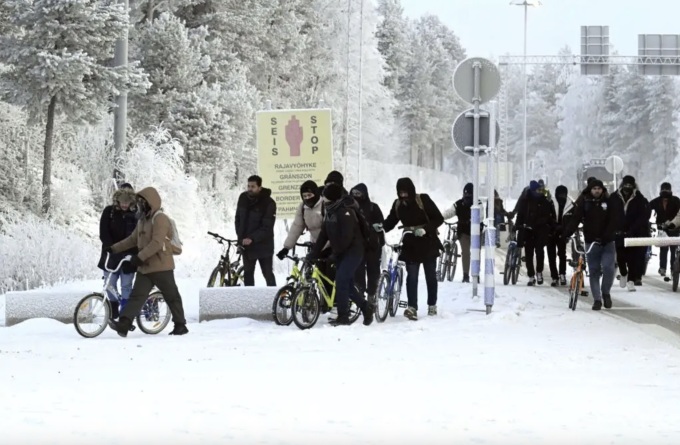
Migrants arrive at the Russian-Finnish border in the north on November 21 by bicycle. Photo: Business Insider
Tomi Kivenjuuri, head of the legal department of the Finnish Border Guard Agency, accused Russian authorities and border guards of being deeply involved in the process of bringing illegal migrants, mainly from Middle Eastern and African countries such as Yemen, Afghanistan, Kenya, Morocco, Pakistan, Somalia and Syria, to the border between the two countries.
Several images posted over the past two weeks show migrants being helped to the border by cars and trucks, then given bicycles or electric scooters to travel the rest of the way to the border crossing with Finland.
"Russia appears to be using 'hybrid warfare' tactics on the Russia-Finland border, similar to how Russia and Belarus created the migrant crisis on the Polish border in 2021. The purpose of this tactic is also to destabilize NATO," the Institute for the Study of War (ISW), a US-based policy think tank, assessed.
Hanna Smith, an expert at the European Center for Integrated Threat Response (Hybrid CoE), noted that Russia had warned Finland of consequences for joining NATO earlier this year. She said the migrant crisis emerging on Finland’s eastern border could be one of the consequences Moscow had mentioned.
Jukka Savolainen, a colleague of Ms. Smith, said that Russia is testing its “migration weapon” to see how Finland will respond to unconventional tactics. If Finland acts decisively by closing its borders, Russian public opinion will feel that it is under siege from the West, thereby strengthening internal unity to counter the external threat.
"Russia needs to create a mentality of a besieged stronghold, seeing the West as a constant threat. The Finnish border will be a useful tool for the Kremlin to promote this mentality. Once the message is repeated constantly, people will form a defensive mentality and even skeptics will turn to trust," Savolainen said.
This is not the first time that the Russian-Finnish border has been strained by the influx of refugees. From late 2015 to early 2016, Finland recorded about 1,800 illegal migrants crossing from Russia to the north of the border between the two countries.
Finnish officials at the time also accused Russia of providing buses and accommodation for migrants, and instructing them to seek asylum in Finland as soon as they crossed the border. However, Helsinki at the time refused to call this a "hybrid warfare" tactic, because it wanted to maintain stable relations with Moscow.
Fontanka , a Russian newspaper, investigated a popular route for illegal migrants last week. They often enter Russia through Moscow airports with valid entry documents, but then take buses to St. Petersburg to find a smuggler. Smuggling organizations take migrants to the border and instruct them to buy bicycles for 3,000 to 10,000 rubles (about $34 to $113), or steal them and make their own way to the border.
Some advertisements for this route are posted online in Arabic, offering the opportunity to enter Europe to seek asylum, for a price of 2,100-5,400 USD.
This phenomenon is not unique to Finland. In 2021, the Polish government accused Belarus of collaborating with Russian private military groups to bring thousands of illegal migrants from the Middle East and Afghanistan to the border in an attempt to cross into Poland.
In 2022, Italian intelligence accused Wagner, a Russian private military corporation, of organizing boats to smuggle migrants out of Libya and into Europe.
Estonia and Norway also detected an increase in the flow of migrants via Russia in November, so they warned of closing their borders. Estonian Interior Minister Lauri Laanemets called this a tactic of "organized pressure on migrants". He said Moscow wanted to create social instability, fear in neighboring countries and erode people's trust in existing institutions.
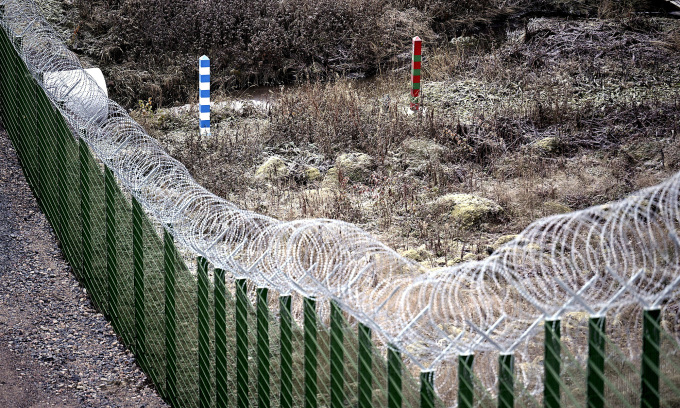
The pilot area for building a border fence with Russia in the Imatra region of Finland on October 26. Photo: Reuters
According to two experts from Hybrid CoE, the situation on Finland's eastern border is not yet as serious as the migrant crisis on the Poland-Belarus border in 2021.
The wave of illegal migrants who tried to enter Poland via Belarus two years ago was more organised, with Warsaw accusing Belarus of building refugee camps near the border to maintain constant pressure. Refugees also did not just target the border gates, but tried to cross the entire border, clashing with police and border guards near the fences.
"The developments at the Russian-Finnish border in 2015-2016 can be considered the first exercise, while the developments in Belarus in 2021 were a large-scale exercise. The tactical goal at that time was to push the flow of migrants beyond the control of the enemy authorities, aiming to collapse the immigration reception system. The situation in Finland is still better," Jukka Savolainen analyzed.
Helsinki is advocating a strong and rapid response to the wave of migrants crossing Russia to the border, including a policy of building a 200 km long border fence.
Public opinion in Finland has begun to split over these reactions. While the right-wing forces support tighter immigration controls, some Finns are worried that they will not be able to travel to Russia to see their relatives if the border is closed. Protests have broken out in the two cities of Helsinki and Lappeenranta against the border closure.
"Russia is experimenting with dividing Finnish society, while also observing which forces in Finland tend to cooperate. They are calculating to build new relationships, but that is a long-term goal," Hanna Smith commented.
She analyzed that the border crisis is dividing Finnish public opinion into two groups, one group sees it as a national security issue, while the other group sees it as a humanitarian issue. Helsinki will need to be extremely careful to avoid moves that will escalate the positions of both groups and create social unrest.
Savolainen also fears that the number of refugees pouring into Finland's eastern border will surge in the coming period, exacerbating the humanitarian crisis and turning Finland into a European refugee debate. In addition, the debate over border controls also risks fueling "Russian-phobic" sentiment, which is detrimental to Helsinki.
"Arguments that Finnish society is 'anti-Russian', as Kremlin spokesman Dmitry Peskov describes it, will cause a divide between Finns and ethnic Russians living in Finland. The peaceful demonstrations of the past will then become more chaotic," Hanna Smith warned.
Thanh Danh (According to YLE, EuroNews, Telegraph, Spectator )
Source link




![[Photo] Science and Technology Trade Union honors exemplary workers and excellent union officials](https://vphoto.vietnam.vn/thumb/1200x675/vietnam/resource/IMAGE/2025/9/17/842ff35bce69449290ec23b75727934e)

![[Photo] General Secretary To Lam chairs a working session with the Standing Committee of the Government Party Committee](https://vphoto.vietnam.vn/thumb/1200x675/vietnam/resource/IMAGE/2025/9/17/cf3d855fdc974fa9a45e80d380b0eb7c)




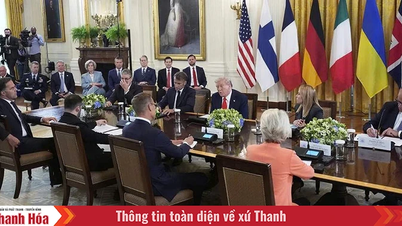













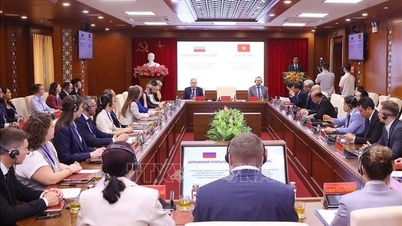

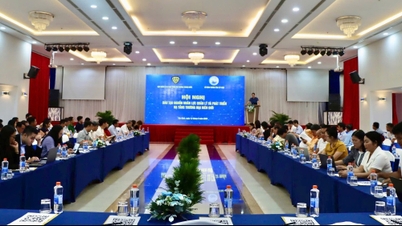


























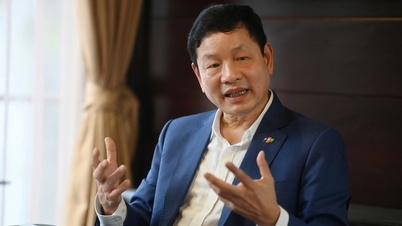









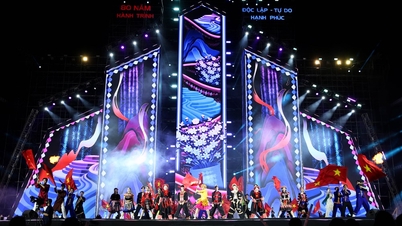







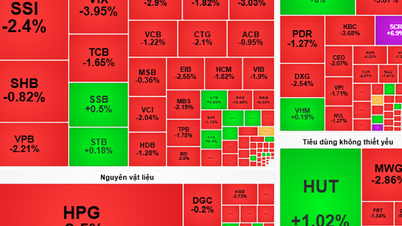
































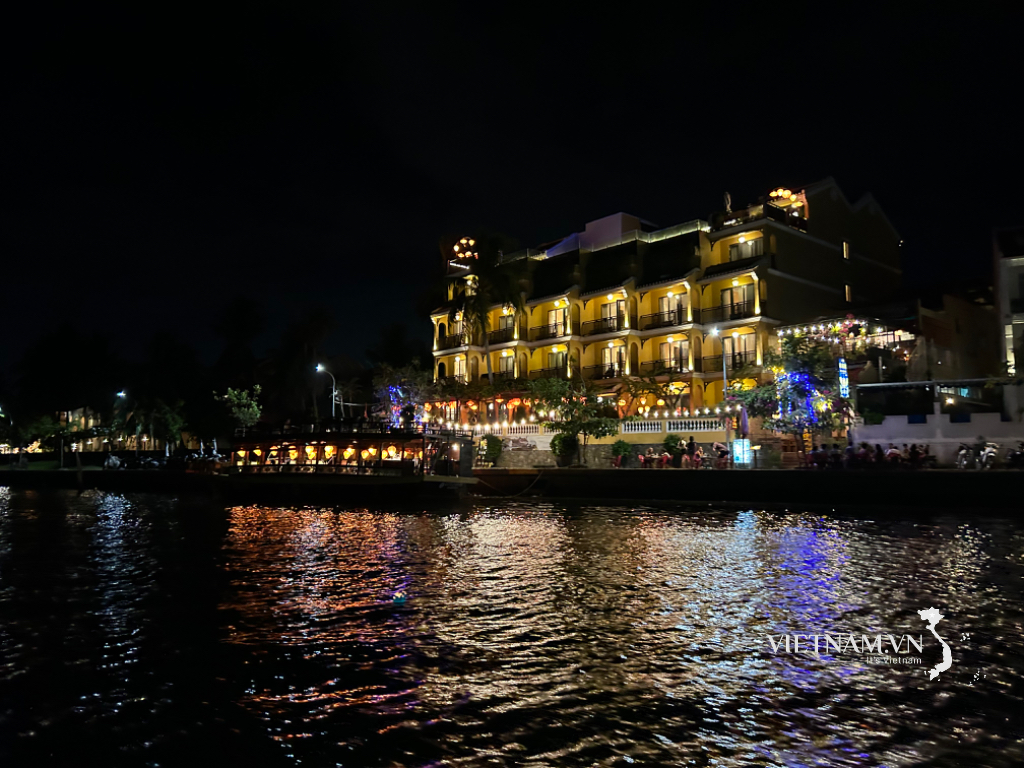

Comment (0)